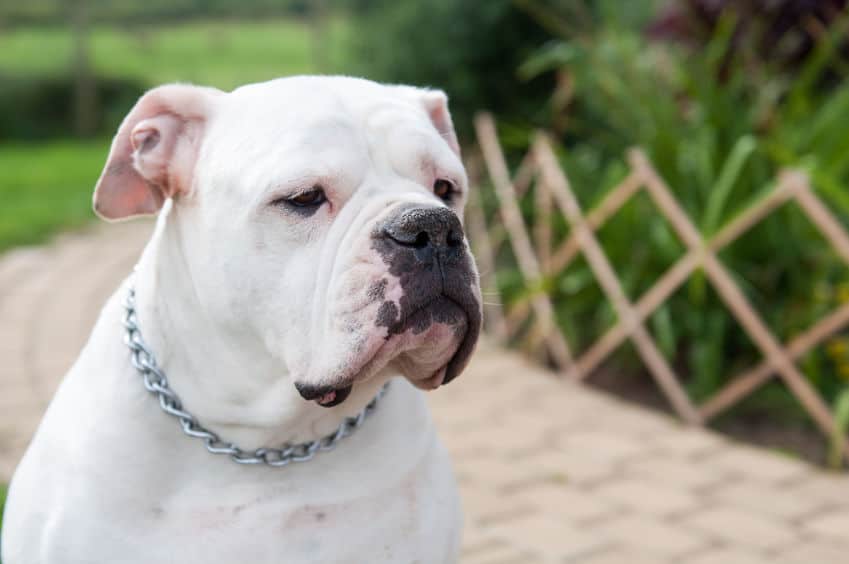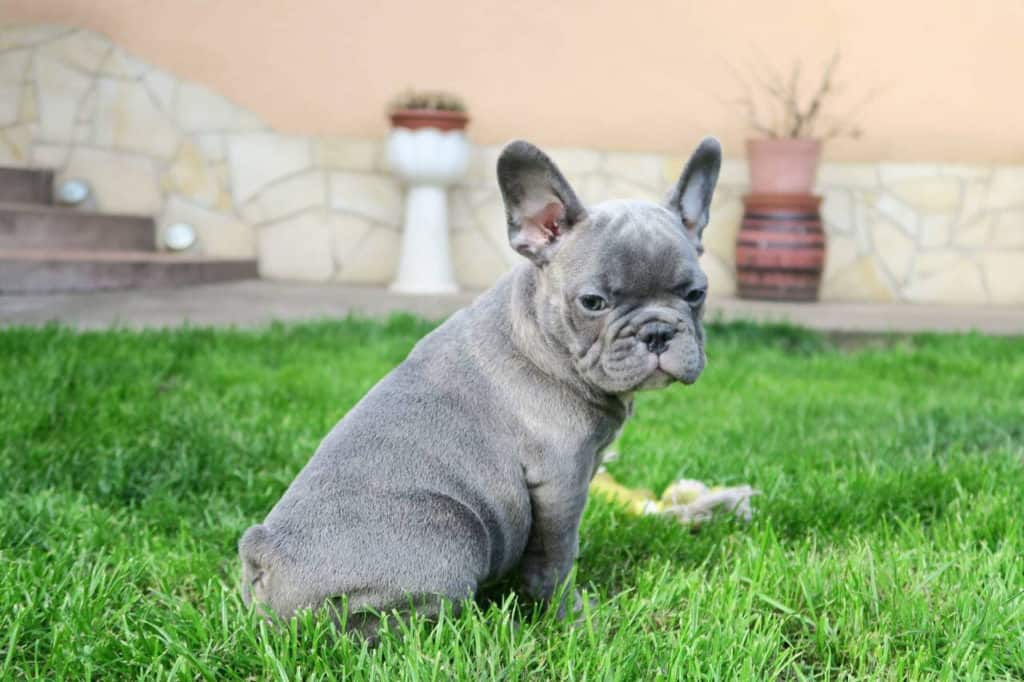To begin with, we will like to advise you that avoid getting duped by the name of the dog. It is a Golden Labradoodle and not a Goldendoodle. Whatever the name may suggest, there are significant disparities between the two dogs.
Even though one of their purebred parents is Poodle, the other parent is not the same. Goldendoodles tend to have Golden Retrievers as their other parent.
In contrast, Golden Labradoodles tend to be a cross between Poodles and Labradoodles. They inherit their golden colour from the yellow coloured Lab. However, in genetics, nothing is definite.
Therefore, you can never be a hundred per cent sure of your dog receiving a Golden colour from an intermingling between Yellow Labradors and Poodles.
Introducing the Golden Labradoodle
Even though the Labradoodles have emerged as one of the most preferred hybrid dogs among the dog lovers, very few people are cognizant of its emergence and purpose.
For example, you may not know that Labradoodles are the first acknowledged mixed breed dogs. In fact, you can consider this designer dog’s creation as a landmark in canine history.
But that’s not all. There are many more facts that you must know if you are one of this dog breed’s ardent lovers. And this article will present you with all the nuances of raising a Labradoodle, especially a golden one.
About the Golden Labradoodle
Labradoodles can acquire a vast range of coat colours. These coat colours include:
- Black
- Red
- White
- Cream
- Silver
- Chocolate
- Golden
As you can see from the list mentioned above, the golden colour is one of the many beautiful coat colours that a Labradoodle can acquire.
Does the Golden Labradoodle belongs to a separate breed?
Definitely not. As we have implied in the list mentioned above, golden constitutes just one of the many beautiful coat colours of the Labradoodle breed.
Therefore, by no means, the Golden Labradoodles are a separate breed from the standard Labradoodles.
Now that you have a small glimpse of Golden Labradoodle’s pedigree, you must have inferred that you have to get some more information regarding the Labradoodle as a breed to raise a Golden Labradoodle.
Do not get stressed. The coming sections will mitigate all your apprehensions and misapprehensions regarding the Golden Labradoodle.
History of the Golden Labradoodle
An overview of the Labradoodle as a breed will definitely entail a journey to flashback. Otherwise, how will you know the precise reason and purpose of this dog breed’s origin? Fortunately, the Labradoodle’s origin story is an enthralling one. Hence, you won’t get bored with it. So, here is the story behind the birth of one of the first acknowledged hybrid dogs.
It was in the mid-1980s that the Royal Guide Dog Association of Australia (RGDA) received an unusual request from a couple living in Hawaii. They wanted a hypoallergenic guide dog.
The woman of the house was blind, and the husband was severely allergic to dogs. At that time, Wally Conron was the breeding manager of the association. At first, he thought of training several Poodle dogs and turning them into guide dogs. For this, he selected 33 Poodle candidates. But unfortunately, none of them was successful.
Birth of the Labradoodle
Following several unsuccessful attempts, Wally Conron thought of crossing a Poodle with a Labrador Retriever – one of the most intelligent guide dogs. The resultant breed was a guide dog with a non-shedding coat. It is to be noted that despite their origin in Australia, standard Labradoodles by no means are same as the Australian Labradoodles.
Distinction between Goldendoodle and Golden Labradoodle
Before delving into the Golden Labradoodle’s genetics, you must clear certain misapprehensions regarding the Golden Labradradoodle. It is vital because most people make this terrific mistake of confounding Golden Labradoodles with Goldendoodles. The reasons are two.
- Their names are almost the same.
- Both of them has the same golden coat with an appearance that is not too dissimilar.
To avoid such a grave confusion, you must remember that Goldendoodle has Golden Retriever’s genes in its body. While the Golden Labradoodle has Labrador Retriever’s genes in its body.
Genetics of Golden Labradoodle
Truth to be told, you do not have to know about dog genetics unless you plan to breed your dog. However, there is no loss in acquiring some general knowledge. Right?
Besides that, you must be intrigued to know, precisely what causes that enchantingly golden fur colour. No?
However, for that, you have first to remember that the Golden Labradoodles are actually termed as apricot. Various recognised kennels registering Labradoodles compare the Golden Labradoodles’ coat colour with an apricot’s interior.
There are variations within that golden coat as well. The shade can vary from a deep orange-gold to a light cream gold. Now the question is, how does a Labradoodle inherit a golden coat?
How does the Golden Labradoodle inherit that beautiful Golden Coat?
The hint lies in the base colours of dogs. Each dog comprises of two kinds of pigments – black (eumelanin) and red (pheomelanin). Even though these pigments are the main determinants of a dog’s body colour, they are not the only determinants.
There are other genes as well that react with these pigments. These genes are called extensions. So far the Golden Labradoodles are concerned, these extensions act on the pheomelanin to give a lighter version of the red colour, i.e., golden or apricot.
What about the colour of the nose and eyes?
In the case of Golden Labradoodles, the pheomelanin determines the coat colour. However, when it comes to the nose and eyes, it is no different than other dogs.
Just like all other dogs, Golden Labradoodles’ nose and eye colours are determined by the eumelanin (black) pigments. Consequently, they tend to inherit a dark black nose and two hazel or brown eyes.
Overall Temperament of Golden Labradoodles
According to the official webpage of the Australian Labradoodle Association of America (ALAA), a dog can be considered a genuine Labradoodle only if it exhibits the following temperamental features.
- High level of intelligence.
- Keen to please.
- Extremely trainable.
- Cheerful
- Sociable
- Amusing
- Highly energetic player.
- Calm when cuddled.
- Extremely affectionate towards both family and strangers.
- Very intuitive with the ability to gauge a person’s current mood.
Quite a long list of beneficial traits. No? However, like all dog breeds, even Labradoodles have some shortcomings.
Some temperamental shortcomings of Golden Labradoodles
There is no place for pure black or pure white in genetics. It is all about grey. Consequently, along with the agreeable attributes, your Golden Labradoodle is bound to inherit some unwanted features from its purebred parents as well.
These undesired traits may include:
- The shy and anxious nature of Poodles.
- The nasty chewing and digging habits of Labrador Retrievers.
There are other undesirable habits, as well. However, the abundance of good qualities outdoes the number of bad traits. It is probably the main reason behind the soaring demand of the Labradoodles as family dogs among all other hybrid dogs. Besides that, they also serve as some great service dogs. One can imagine how popular they are becoming day by day.
Does the Golden Labradoodle’s coat colour affect its temperament?
Even though it has been four decades since the inception of Labradoodles, there is not much data on whether Labradoodles’ coat colour affects its temperament or not. Truth to be told, forty years is not sufficient time to conduct such inquiries and give a definite conclusion. However, whatever researches have been conducted so far, one thing is apparent.
Your Golden Labradoodle’s overall temperament will primarily depend on your breeder’s dedication to producing healthy, high-quality dogs with safe breeding and training practices.
Impact of Qualified Breeding on Golden Labradoodle’s Temperament
With the soaring demand of a particular breed, the number of backyard breeders also seem to rise. The Golden Labradoodles are no exception to this fact. With that lustrous, golden non-shedding fur, Golden Labradoodles seem to be almost all designer dog lovers’ dream pooch.
No wonder, so many backyard breeders consider them a money-making machine and engage in unhealthy breeding practices. If you want your Golden Labradoodle to lead a healthy life for years, you must do thorough research to find a reliable breeder. Meet your Golden Labradoodle’s parents and get it’s pedigree and health records. A responsible breeder will present you with your dog’s minutest details.
In case you wish to adopt your Golden Labradoodle from a rescue or charity or shelter.
Adopting a dog from a rescue or charity is a noble gesture. However, it is not without some serious challenges.
The most significant one is that you won’t have a single idea regarding your golden pup’s breeding history. Consequently, you won’t know what potential health and temperamental issues your Golden Labradoodle may have inherited from its purebred parents.
Besides that, your dog may have some traumatic past. As a result, it may have developed some behavioural issues. Taking the help of some professional trainers and vets are highly recommended in such cases.
General Health of Golden Labradoodle
During these forty years of Labradoodle’s entire lifespan, there have been no researches that can validate the fact that coat colour influences the Golden Labradoodle’s general health.
However, their purebred parents are famous for some grave genetic problems. Because your Golden Labradoodle is a hybrid dog, you won’t be able to predict what potential health problems it may have inherited from its parents.
For that, you must search for a breeder who is candid about his breeding practices. However, doing a thorough into their parents’ general health yourself can help you to diagnose your pup’s problems beforehand and act accordingly.
Labradoodle Parents’ Health Issues
To begin your inquiry on your Golden Labradoodle’s purebred parents, we will prescribe you to look into the official page of the Canine Health Information Center (CHIC). They are acknowledged for providing an updated list of all health issues that different dog breeds may encounter.
Search for both Poodle and Labrador Retriever and scrutinize the list of health problems thoroughly.
Following this, you have to meet a breeder and ascertain that your Golden Labradoodle’s parents have been cleared of all the potential health problems. Nevertheless, for your convenience, we will present you with a brief overview of all the probable diseases and disorders that your pup’s purebred parents may suffer.
General Health Problems of Labrador Retriever
According to the CHIC official webpage, Labrador Retrievers tend to develop the following health conditions.
Therefore, ascertain that your breeder has made your Golden Labradoodle’s Labrador parent go through all the health screening tests mentioned in the upcoming sections.
Heart-related Problems
Cardiac issues are very much prevalent among Labrador Retrievers. Some of these diseases are acquired. Others are genetic. The latter includes problems related to electric signals controlling the heartbeats and valve issues.
Hence, before adopting a Golden Labradoodle, ascertain that its Labrador parent’s heart has been thoroughly screened.
Elbow and Hip Dysplasia
These are joint issues that occur due to abnormal formation of hip and elbow sockets. They cause tremendous pain and result in arthritis and lameness. Labradors tend to develop this condition when they have gained too much weight. However, fortunately, veterinarians can check these issues through an x-ray.
Therefore, you must ask your breeder to produce your Golden Labradoodle’s Labrador parent’s x-ray reports.
EIC (Exercise-Induced Collapse)
Labrador Retrievers are gun dogs. Therefore, it is in their instinct to engage in strenuous activities and exercises. However, sometimes such arduous activities can cause them to become weak and eventually collapse. The consequence of such a condition varies from dog to dog.
Some retrievers recover after a few days of complete rest. Others may even die. Therefore, it is salutary to be safe than regret later. Whether your dog’s Labrador parent suffers from EIC or not can be ascertained by some tests concerning muscles. So, do ask your breeder for those reports.
Bloat
Being a large breed, Labrador Retrievers are prone to develop conditions like bloat. It is a condition in which your pup’s stomach may get filled with twists and gases. It has the potential to get deadly if not diagnosed before it gets too late.
But, unfortunately, your breeder cannot get it tested beforehand to prevent your Golden Labradoodle from developing this condition.
Eye Issues
Labradors are susceptible to eye issues like Progressive Retinal Atrophy (PRA) and Centronuclear Myopathy (CNM). Ask your breeder for eye test records as some of these eye issues can lead to your Golden Labradoodle turning blind.
General Health Problems of Standard Poodle
According to the database of CHIC, Standard Poodles are susceptible to the following health issues.
Eye Issues
Just like Labradors, Poodles are prone to Progressive Retinal Atrophy (PRA). Besides that, they suffer from cataracts. Even though there are no pre-tests for cataracts, PRA can be tested beforehand.
Hip Dysplasia
Poodles are more prone to developing malformed hip sockets. Get your dog’s Poodle parent’s hip score. Remember that, in this case, a lower score is a better score.
Epilepsy
Idiopathic epilepsy is another disease that is very much prominent among Standard Poodles. Because it is a genetic disease, you need to get a detailed family history of your Golden Labradoodle’s Poodle parent to ascertain that none of them had seizures.
Addison’s Disease
It is a hormonal problem that impacts your dog’s Poodle parent’s blood composition. Unfortunately, there are no DNA tests for this condition. Therefore, you have to rely on your breeder’s knowledge of your dog’s pedigree records
Von Willebrand’s Disease
It is a condition in which your dog’s wounds or injuries may not get clotted quickly. Consequently, your pup has to suffer from excess bleeding. Fortunately, there are DNA tests to ascertain whether your dog suffers from this condition or not. Ask your breeder to furnish you with those tests- records.
Sebaceous Adenitis
It is a skin disease that is specifically prevalent among Poodles. It causes itching, blisters, infections and hair loss. Unfortunately, there are no pre-tests for this condition. Therefore, ascertain that your dog has no history of skin diseases.
Some diseases cannot be tested beforehand
After going through the potential diseases mentioned above, you may have already inferred that not all conditions can be pre-tested. However, if you despise being uncertain, we will advise you to get your dog’s parents minutest of details from your breeder.
If feasible, spend some time with your prospective Golden Labradoodle’s parents. It will give you a glimpse of your pup’s potential physical and behavioural problems.
Grooming Needs of Golden Labradoodle
Just like all Labradoodle puppies, your Golden Labradoodle will possess a puppy coat unless it sheds off at the age of six months. By the time your dog becomes twelve to fifteen months old, an entirely new adult coat will adorn its body. Because your pup is a hybrid and genetics is never wholly “pure,” your dog may inherit any of the three coat types.
Two of them will be identical to their purebred parents. In contrast, the third one will represent what you can term as a “grey” arena. In other words, the third one will be a mixture of the Labrador and Poodle parent.
Your Golden Labradoodle’s grooming needs will primarily depend on the coat type it has received from its parents.
Fleece Coat
These coat types tend to be incredibly soft and spiral or wavy in shape. They are less likely to shed and relatively easy to groom and wash. These coats can be termed as a typical mixture of the Labrador and Poodle coat.
Hair Coat
You can consider this coat type a more unkempt version of the Labrador coat. The tendrils are longer and therefore need to be clipped. This one is a heavy shedding coat with a high chance of dog odour. So, be ready with brushes, combs, de-shedding shampoos, and vacuum cleaners.
Not at all suitable for people with pet allergies.
Wool Coat
This coat type is closer to the standard Poodle coat. The hair is wiry, dense and curly. Consequently, these kind of body coats tend to be really high maintenance. Professional groomers will be required for clippings and haircuts. Besides that, you have to do some regular brushing and combing to keep the hair mat and tangle-free.
Conclusion: Raising a Golden Labradoodle
Hopefully, the article was enriching enough to clear all your doubts and misapprehensions regarding the origin and purpose of Golden Labradoodles. We have also given some critical insights into the nuances of raising a Golden Labradoodle. If you think that a Golden Labradoodle is just the companion you need to light up your world, do not wait. Get this beautiful puppy as soon as possible.
But remember one thing, “beware of backyard breeders.“
Table of Contents



